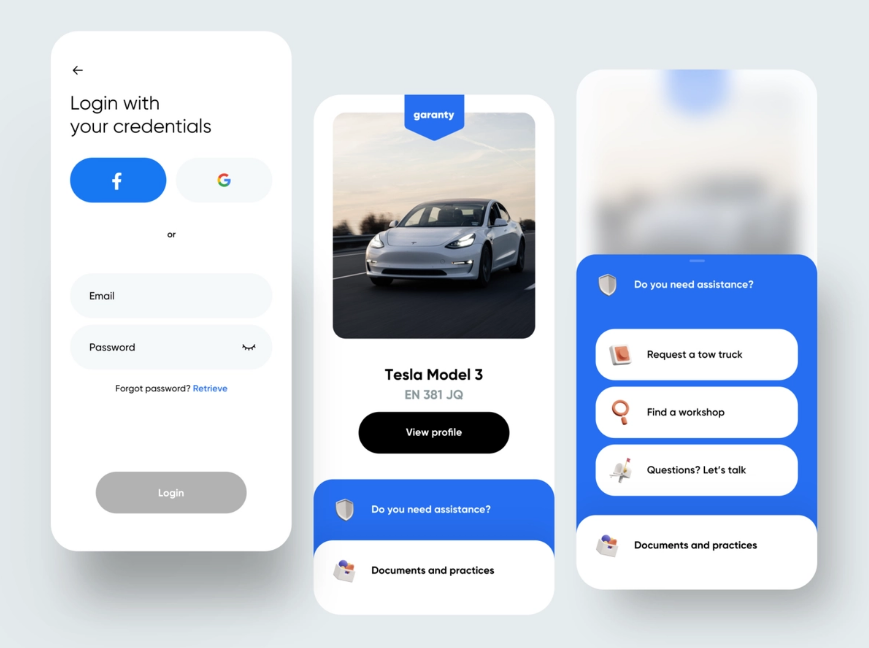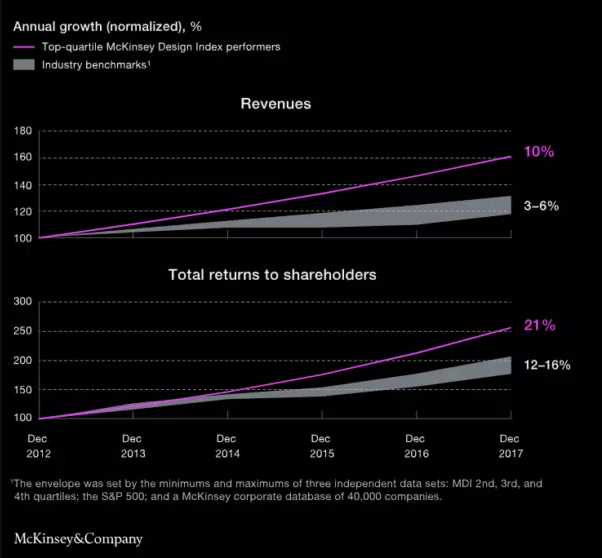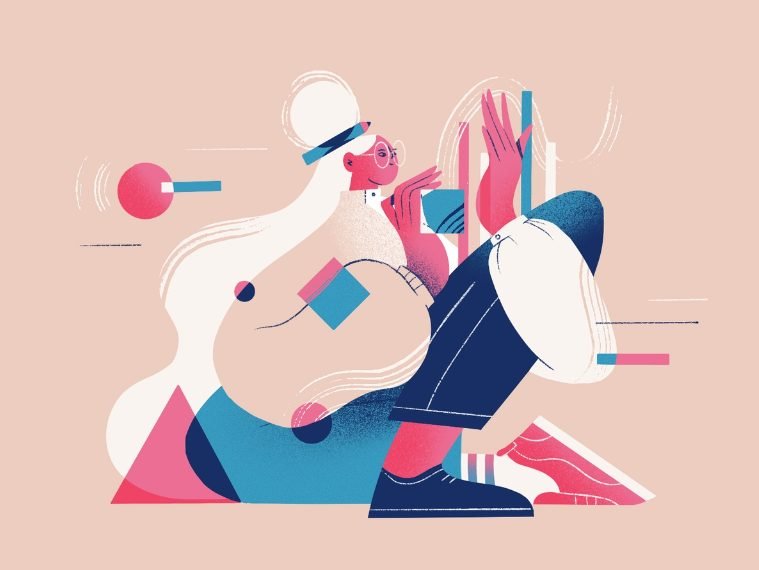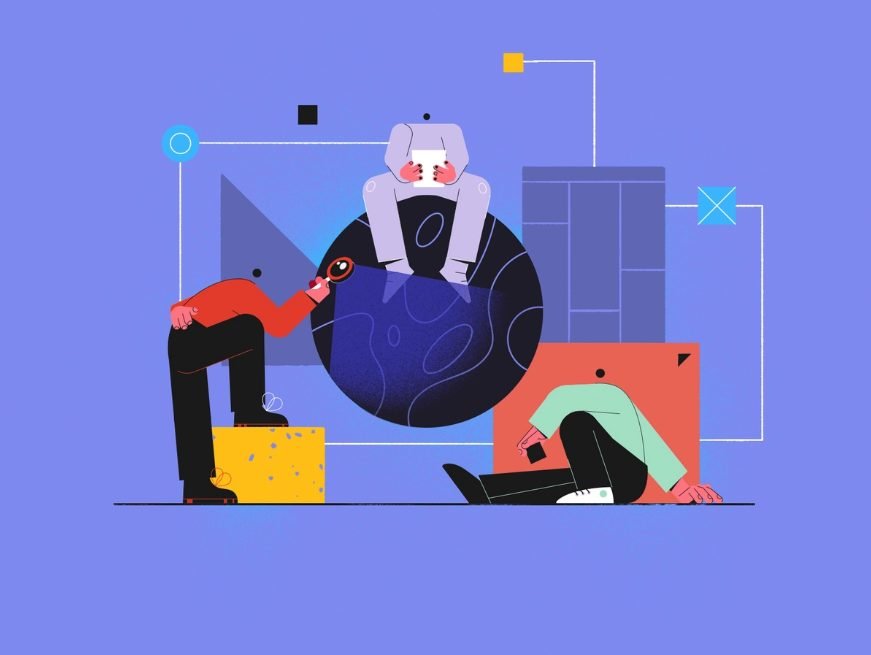The Business Value of Design for Your Startup: Design Thinking
Today, design thinking is a much broader concept that applies equally to product design, doing business, or building any business / personal relations. In fact, being design-centered & having that ‘design thinking’ may generally turn out to be the key concepts for each startup to value design & their future projects success.

After all, without a basic understanding of what’s design thinking & design-centricity, it’s hard to evaluate the meaning of design in terms of future business prospects. Let’s see why design may be so crucial for new businesses at the start and how it pays at the end.
What’s design thinking?
The user request comes to the forefront, but the possibility of technical implementation, economic conditions, and others – step aside. Design thinking involves an immersion into the customer experience, a third-party approach to problem definition, focusing on personal scenarios of behavior and actions. The method assumes a creative but, at the same time, based on common sense, rethinking of problems.
When we say design thinking we mean a user-centered approach to product development that involves non-standard solutions to the users’ problems.
Common sense should lay in the basis of your product design thinking each time you come up with a bright idea to make it a reality or come across a design trend. This helps entrepreneurs see the user’s problem, come up with a solution for it, and then implement the idea using a synthesis of creativity and rationalism.
Guided by design thinking, we:
- focus on people and their both explicit and hidden needs and pains,
- highlight their problems and come up with dozens of ways to solve them (from the most banal to the most fantastic),
- choose those ideas that are beneficial for our business and the client,
- and turn them into the final products,
- after we create and test prototypes in the process of a series of iterations,
- we release a product that can solve the client’s problem and will be in demand on the market accordingly.
This all means that the product design has value for both business and the customers.
If you approach building your products like that – be sure you have that design thinking and are a user-centric startupper. And that’s good for you.
Thus, design thinking is a happy medium of human benefits, technological capabilities, and business interests.
Discover incredible design thinking illustrations here.
Design thinker’s checklist
So, no matter what’s happening, keep in mind that at the heart of design thinking there always are:
- mistakes, because they help to find the optimal solution to the problem;
- idea iteration – at least into a prototype;
- effective communication with the user;
- teamwork, idea generation (brainstorming);
- pitching worth ideas;
- checking out hypotheses (customer development);
- prototyping;
- testing & QA.
Customer development involves generating hypotheses about solving consumer problems based on customer experience.
Where to better apply your design thinking:
- while developing products and services (when conducting design research, for rapid prototyping, MVP);
- to activate the team’s work – brainstorming, working on mistakes, establishing feedback, involvement, etc.;
- for the development of creative thinking (solving complex / non-standard tasks, combat the fear of failure, develop entrepreneurship, and so much more).
Why Design is so Important for Business?
It’s elementary: the design will help, even at the first stages of work on a project, to study the client’s need and prevent a situation when a needless product enters the market. In this case, design thinking helps entrepreneurs to avoid three classic mistakes that most startups constantly do:
1. You don’t study the audience
Business founders, their friends like it, but the target customer is not well studied and may be indifferent to it. For example, the users’ problem is not as urgent as it seems, or they find another, more convenient, or faster solution.
The design-centric approach here involves studying customer demand at the first stage: a prototype will be created to solve a specific customer problem. Otherwise, it is all in vain, and you lose your budget on useless products.
2. The project has no value proposition
Meaning that it’s not well defined. The product often repeats a well-known model, optimized according to the principle “faster / cheaper / more beautiful, etc.”
By using design thinking, you make your product the key to solving a user problem. You will work through every client’s pain and make your product truly valuable – people won’t want to give it up!
3. A clear monetization model is missing
The design will immediately reveal how much and for what the client is willing to pay you, so you can immediately imagine how much you can earn on the project and in which ways.
You apply common sense in an environment where there is an urgent need to solve a consumer problem, but the urgency is not a vital feature of the approach. Design thinking involves a systematic study of the client’s needs, constant work on the product, starting from the idea and ending with the final full-fledged working version.
3 Most Important Arguments Why You Need to Invest in Design
Consequently, the next issue is – which are the strongest arguments to think about design and create UX to strive in your business?
1. Design Strategy Increases Your Market Demand
Studying customer needs at the first stage, building your strategy around it, and solving specific customer problems will add to your product value and, thus, your market demand. Adopting a customer centric business model further ensures that every aspect of the company’s operations and offerings are designed to meet and exceed customer expectations, significantly enhancing customer satisfaction and loyalty.
2. UX Design Turns Potential Customers Into Paying Customers
Of course, the business value of UX measures the monetization of your product. When people understand your product is a top, they never leave and pay up to avoid other useless solutions they come across everywhere else.
3. User Interface Design Makes Your Client Happy
Finally, people get happy while using your solution. No wonder, by using design thinking, you make your product the key to solving their problems.
Useful Figures
McKinsey, an international consulting company, has done numerous researches that identified how and where the business value of design is expressed. We share some figures for good:
Nearly 60% of companies surveyed, despite the value of iteration, said they only use prototypes for internal testing at the end of the product development. However, the most successful companies tend to speak and show their best practices from the very beginning.
MDI (McKinsey Design Index) is an index that reflects the economic effect of the design. Thus, there’s a strong connection between MDI and overall business performance:

Companies with above-average MDIs have increased their profitability and total shareholder return (TRS) significantly faster in five years than their peers. There the revenue growth is 32%, and TRS – 56%.
To put it simply, companies with beautifully designed products earn more money. Companies with high MDIs doubled the growth rate of industry peers.
4 Tips You Need to Understand to Make Successful Web Design
There are aspects that you should well understand during the UX workflow. They will help you crave the value of design better and take maximum use out of the whole process from A to Z.
1. Analytical leadership
The knowledge you apply and the analytical leadership you establish will play a great role in craving the ultimate products. Cherish these attributes in your teams and they will skyrocket our solution. Preserve common-sense while making decisions.
2. User experience
UX is ahead of everything in what you’re doing to our product. It’s impossible to nail up the business value of UX design till you don’t do it.
3. Cross-functional talent
Your organization performance will grow altogether with the talents you use in your UX development process. Making it possible to exchange & share even the most sophisticated knowledge of design and product development. It’s a unique experience. Dwell on high culture within smart teams to produce only top-notch products.
4. Continuous iteration
Your products and the service they cater to your client will undergo a series of changes needful for flawless functioning in the end. It’s normal. Be ready to iterate as many times as it takes to get to the ideal solution.
Conclusion
No matter a product or a service, digital or land-based, to get to the top, you need to think sober:
- Analyze.
- Make an incredible design for both online and offline.
- Develop multifunctional teams.
- Constantly test and never relax even after the launch of the project.
The use of design thinking while creating a product allows you to make it unusual and at the same time understandable, attractive, and memorable. Design thinking is at the heart of the work of many corporations. Thus, Apple’s successful marketing techniques result from a different outlook, which also follows the company’s slogan: “Think different.”
This design approach is now successfully implemented at IBM, General Electric, Procter & Gamble, Philips Electronics, Airbnb or Fintech organizations, etc. Similar top-of-mind technology tycoons & innovation beginners are among the Cyber Craft clients nowadays. Why not joining them?
So, what’s your value of design in business? Of course, it’s a fact that helps your new business stand out from the competition, meet high consumer expectations, and share the global experience. It defines your competitive ability, future business success, and your company’s prosperity.





















